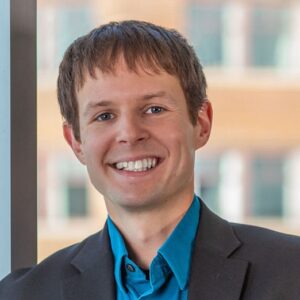Regulatory Update: Community Bank Leverage Ratio Framework. Look Before You Leap!

You may recall from our September 2018 article From Regulation to Relief: A Community Bank Perspective on The Economic Growth, Regulatory Relief, and Consumer Protection Act, one of the directives of the Act is to provide regulatory relief to the banking industry by reducing regulatory reporting requirements and simplifying capital calculations. In September 2019, the FDIC finalized a new regulatory capital framework, the Community Bank Leverage Ratio (CBLR) framework. If your institution anticipates electing the new framework, be sure you thoroughly consider all potential scenarios and the impact adopting the framework will have on your institution’s strategic plan and capital as opting-in could have unintended consequences.
Effective January 1, 2020 and beginning with the March 31, 2020 Call Report, the CBLR framework, borne out of the many regulatory relief mandates of the Trump administration, takes effect. The final rule essentially allows qualifying community banks to “opt-in” to the CBLR framework whereby institutions that maintain leverage ratios above 9% will be considered to have met the requirements to be categorized as well-capitalized. The rule, which was jointly developed by the FDIC, the OCC, and FRB, is intended to provide additional regulatory relief and reduce reporting burdens on community banks as part of the directives of the Act. Qualifying community banks are required to have consolidated total assets of under $10 billion, have limits on off-balance sheet exposures, insignificant trading and derivative assets and liabilities, and a leverage ratio above 9%, among other things.
The ratio, considered a simplified way to assess an institution’s financial strength, will be calculated as total Tier 1 capital divided by average consolidated assets, both of which will continue to be computed as they currently are for the Call Report or FR Y-9C, as applicable. One of the key points of this new framework is that the institutions must maintain at least a 9% ratio. Institutions that fall below 9% but remain above 8% have a grace period of two quarters which will allow them to maintain their well-capitalized classification, provided they are in compliance going forward.
Conventional wisdom assumes that most if not all community banking institutions that qualify would opt-in and therefore welcome the reduced burden of computing and reporting their risk-weighted assets and risk-based capital ratios; however, many different perspectives have recently emerged as the final rule was reviewed by CFOs and others.
Under the new CBLR framework, the prompt corrective action guidelines by default, will change. Banks that opt into the new framework must maintain a leverage ratio above 9%. Consequently, once the grace period expires, entities with ratios between 8 and 9 will no longer be deemed well capitalized, despite the Act outlining 8% as the low end of an 8 – 10% range to qualify as such. Many who elect to opt-out are fearful that 9% will become the new “standard” when regulators assess safety and soundness, including during state exams. Many take issue with the opportunity cost of maintaining additional capital should 9% become the de facto standard. Particularly for institutions that are in a strong growth mode, that are contemplating a merger transaction or who have traditionally had lean capital levels, opting in creates a fundamental conflict between managing to a leverage ratio above 9% to benefit from the reduced regulatory reporting burden and strategic plans which could push capital levels below the minimum requirement. For these reasons, many industry insiders, including the ABA, believe that 8% is a more appropriate minimum leverage ratio. The adoption of the Current Expected Credit Loss (CECL) model will have a significant impact on capital because any increase in the required reserves recognized upon transition from the incurred loss model to CECL will be charged against opening retained earnings in the period of adoption. For some institutions, this amount is expected to be significant.
Although it cannot be disputed that the compliance costs of regulatory reporting for community banks are increasing exponentially, there are times when well-intentioned improvements can create even larger and more costly issues. Choosing whether or not to “opt-in” and apply the CBLR framework should be done only after a careful assessment and consideration of your institution’s specific circumstances. For additional information, please contact your BNN advisor at 800.244.7444.
Additional resources:
Disclaimer of Liability: This publication is intended to provide general information to our clients and friends. It does not constitute accounting, tax, investment, or legal advice; nor is it intended to convey a thorough treatment of the subject matter.


